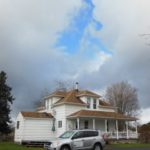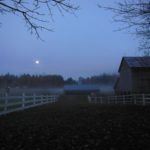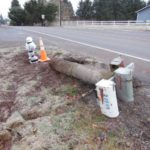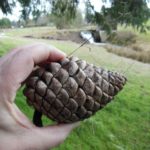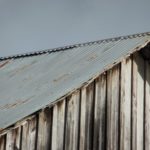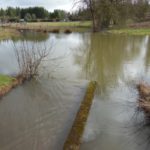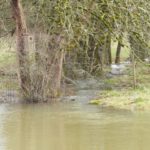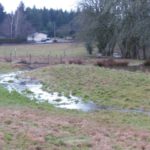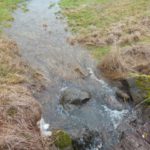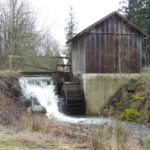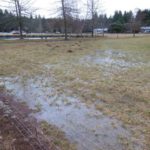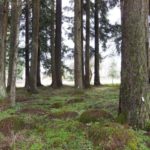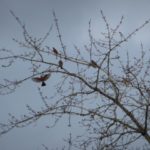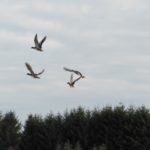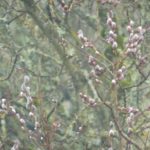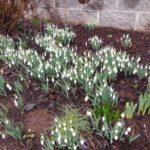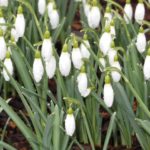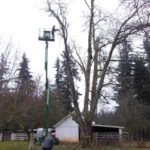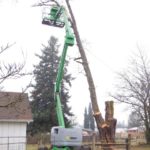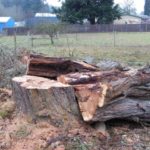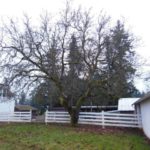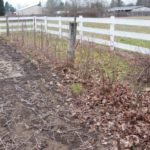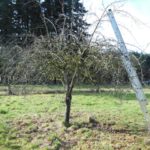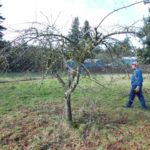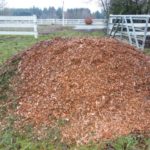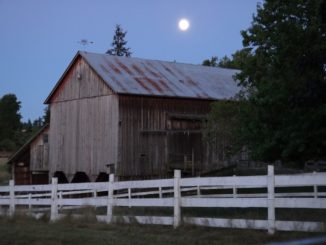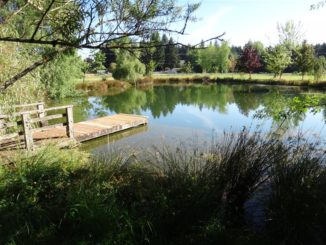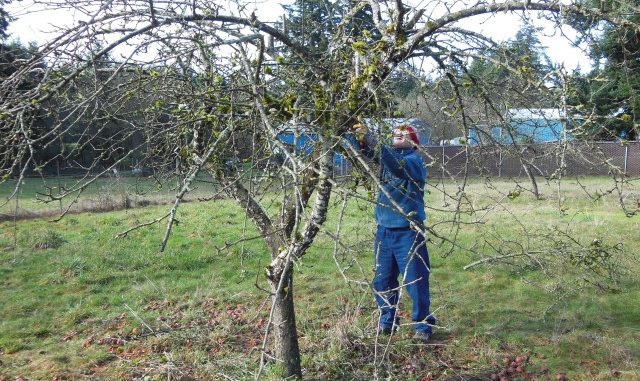
It’s February, and we’re seeing the farm start to wake up from dormancy. The fields are greening up, robins are searching for worms, and the pussy willows are popping.
A cold snap in December challenged us to keep the pipes from freezing as a bitterly cold east wind blew against the farmhouse for several days.
But it was also a beautiful winter. We watched the grassy fields go dormant, and now they are awakening with fresh new green growth. Around Christmas we observed the maple tree branch tips starting to brighten up with red coloration. In February the pussy willows began to open up.
As the ponds filled and discharge increased, we learned why the farm was named Roaring Creek Ranch — because the stream behind the buildings really does roar in the winter!
Buildings and infrastructure

A water leak in the farmhouse caused some damage to a small area of subfloor in the bathroom, but that has been repaired and the leak fixed.
Wind has lifted the leading edge of a roofing panel on the old barn. We made one electrical repair inside the barn for safety.
In the garage, we’ve recently added built-in shelves and tool storage. Since the guest bathroom for visitors is in the garage, maintaining a safe, orderly space in the garage is particularly important!
Winter revealed more fence posts that need replacement. We have some fence corners going soft, and one gate fell when the post holding it collapsed due to rot.
Recently, a vehicle ran into our mailbox post. Neighbors set the post upright, and we’ll be packing additional gravel around the base soon.
Wind
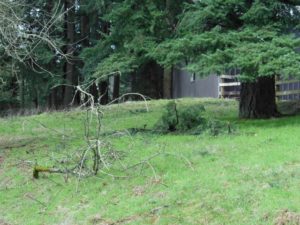
We had a couple of good windstorms over the winter. Quite a few branches were brought down in various places around the farm, and picking them up is one of our late winter tasks.
The mature fir trees near the outbuildings sometimes drop large, heavy cones on top of the buildings, and the noise of a big cone hitting a metal roof is quite loud and startling!
We’re hoping the loose roof panel on the barn will remain safely secured until later this spring when we have additional work to do on some trees.
Ponds
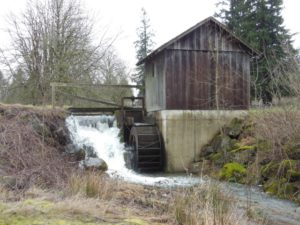
Even though this has been a relatively dry winter, the ponds filled up and we got to see how the overflow designs actually worked. The upper pond overflows into the field immediately south of the pond; this field is called Ferguson field.
Earlier in the winter, we found the drain for the upper pond had become partially plugged with willow roots, so this winter we’ve been designing a different way to keep the pond at the proper level. Meanwhile, we have combined occasional pumping and siphoning of the pond to help reduce the amount overflowing into Ferguson field.
The lower pond overflows through a concrete weir and a grassy swale. The most recent rains filled the straightened stream coming in from the north, and also filled the small channel coming in from the east. The combined flow filled the lower pond to overflowing, and the overflow system has handled the excess water very well.
Wildlife
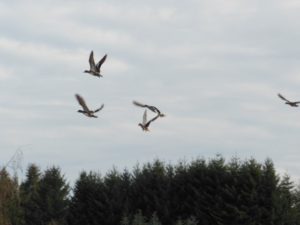
Coming soon will be a post about the birding activities at the farm. Last weekend, Clair Klock led a small group on a Great Backyard Bird Count event at the farm, but poor weather reduce the number of birds identified. The farm is set up as a hotspot on eBird.org’s website, identified as the Beavercreek Demonstration Farm. So far, we’ve identified more than 40 bird species that use the farm.
Rough-skinned newts roam the property. We’ve found them crossing the gravel lot in between the outbuildings, in both ponds, along the drainage downstream from the ponds, and crossing the fields.
We’ve seen many kinds of birds using the ponds, including the biggest Great Blue Heron some of us have ever seen.
Plants
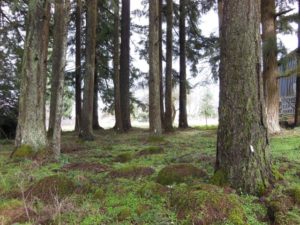
The grove of Douglas fir trees were evaluated for health. We hired a contractor to remove lower branches that had grown so big and heavy they were resting on the outbuildings.
The contractor also thinned the crown of the English walnut tree behind the farmhouse, to promote better tree health. We’re hoping this will add many years to life of this grand old tree!
A large, multi-trunked cherry tree was removed near the farmhouse. The tree was tall enough to hit the farmhouse if it fell, and there was substantial core rot in the tree. Normally, we would have topped it and left it for wildlife, but the proximity to the farmhouse called for complete removal.
Clair Klock and Cathy McQueeney thinned out old canes in the raspberries, and pruned the two surviving blueberry bushes. We’re hoping to add more blueberries to the garden in 2014.
Cathy also planted a block of garlic in the garden, and she and Jeff Lesh are pondering some interesting things to grow in the garden this summer.
Some leaves were shredded with the lawnmower and spread on the garden.
We hope you enjoy the following photographs collected over the winter at the Beavercreek Demonstration Farm!
